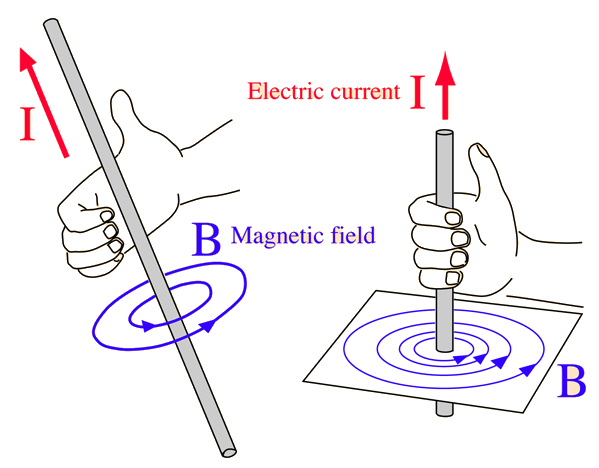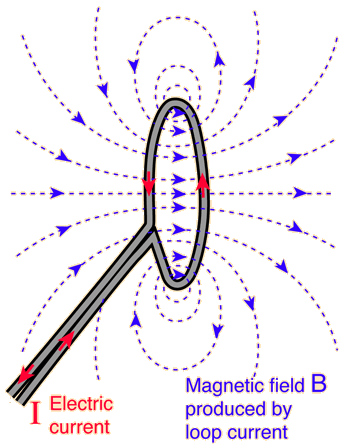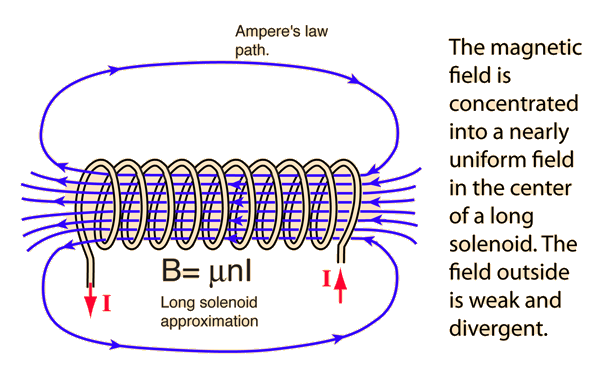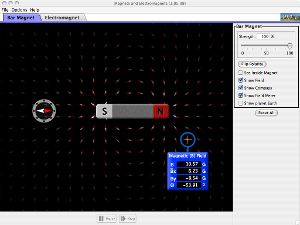Oersted’s Experiment:
At the beginning of 19th century electricity and magnetism were seemingly unrelated. Magnetic ‘charges’ only appeared in dipoles, whereas electric charges could be found as isolated monopoles, just positive or negatives. All materials could be made to gather an electric charge, whereas only the ferromagnetic materials could be magnetized. Magnetic charges were always static, versus electric charges which could either be static or in motion.
A popular myth is that in 1819 Hans Christian Oersted, was using a battery to create electricity in a live lecture. The wire through which the current passed was near a compass, and Oersted publicly and accidentally discovered the connection between magnetism and electricity. This is one of those great examples of how you need to take Wikipedia with a grain of salt.
Robert Stauffer writes a nice article on Oersted and claims that his discovery of electromagnetism was “no mere accident”, and “his discovery of electromagnetism is best understood as arising from a fertile union of speculation and experiment.” You can access the first page here or read the entire thing through the BU Library e-journals. The accidental version of this story was originated by Ludwig Wilhelm Gilbert in Annalen der Physik.
Ampere
In 1820 Andre-Marie Ampere mapped the field lines of a wire in concentric circles. He also observed the forces that two current carrying wires would have on each other.



This is commonly known as the right-hand rule (it is actually one of several right hand rules). Based on Franklin’s convention of the flow of electrical current, if we point our right thumb in the direction of the current, the the magnetic field circles the wire with the curvature of our fingers.
The strength of this field at a radial distance away from the wire is expressed using a specific case of Ampere’s Law

where B is the magnetic field strength, μ is the permeability, I is the electrical current, and r is the radial distance.
Now if we twist the wire into a loop, then inside the loop all of the magnetic fields point in one direction and outside the loop in the other direction. When drawing magnetic fields into or out of our paper, we often draw them as the tip or tail feathers of an arrow. If the magnetic field is coming out of the page towards us we draw it as a circle with a dot inside. A magnetic field going into the page is drawn as a circle with a cross in it.

When we combine several of these loops together into a coil, the magnetic field will be that much stronger. In fact, if we have n loops or turns in the coil, the magnetic field strength of the coil or solenoid (or helix) will be n times greater.
Thus the magnetic field strength of a solenoid is often given as
B = μnI
where n is the number of turns per unit length, and I is the current.

From here we can see the similarities between the field of a solenoid and that of a bar magnet. You can also see this playing with the PHET simulation.
It is worth examining what the field of a coil of wire looks like.
Source of Magnetism
Without going into too much detail, we can attribute magnetism to the motion of electric charge. In general, we would be looking at the flow of electrons, but protons in the nucleus also generate a magnetic field (Nuclear Magnetic Resonance!). Both orbital motion of electrons and “spinning” motion contribute. We have to be careful with the word “spin,” as this gives the electron a fictitious size and dimension. But the electron has a property we call spin, and with it, angular momentum. Ferromagnetism is due to spin of the electrons. Paramagnetism and diamagnetism are also related to the motions of the electrons. Thus domains are the results of actual electron motions.

Applications of Magnetism
You will see in class a lot of great uses for electromagnets and solenoids. Often, a solenoid moves a bar magnet inside of it which is pushed back by a spring when the solenoid turns off. This is useful is door catch releases (think the front door of BUA), the telegraph, and the electric bell.

You obviously can use an electromagnet to pick up small things

or big things

Another great application of an electromagnet is in making a speaker cone.



